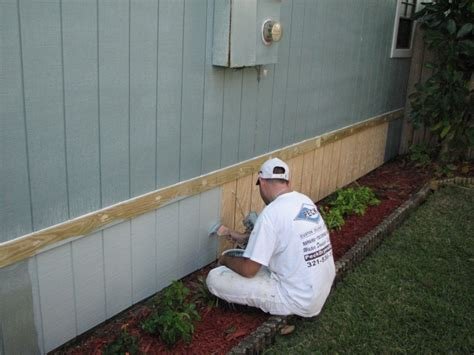Discover the best methods for replacing, painting, and cleaning wood siding with our expert tips and techniques. Improve your home’s exterior today!Wood siding is a popular choice for many homeowners due to its natural beauty and durability. However, over time, it can become damaged, faded, or dirty, leaving your home looking less than its best. If your wood siding is in need of some TLC, you may be considering hiring a professional to repair or replace it. But with the right tools and know-how, you can tackle this project yourself and save some money in the process. In this blog post, we’ll cover the basics of how to repair wood siding, including how to replace damaged boards, how to clean and prep the surface, and how to apply a fresh coat of paint to revitalize your home’s exterior. Whether you’re a seasoned DIYer or a first-time homeowner, repairing your wood siding is a manageable project that can make a big impact on the curb appeal of your home. Let’s dive in and learn how to give your wood siding a new lease on life.
How to Replace Wood Siding
Replacing wood siding can be a daunting task, but with the right tools and knowledge, it is definitely doable. The first step is to assess the damaged area and determine the extent of the repair needed. This will help you to gather the necessary materials and plan the project accordingly. Once you have a clear understanding of the scope of the repair, you can begin by removing the damaged siding. This may involve carefully prying off the siding panels using a pry bar and hammer. Take caution not to damage the surrounding siding, as you will need it to overlap the new piece of siding.
After the damaged siding has been removed, you can then measure and cut the replacement piece to fit the area. It’s important to use the same type of wood and ensure that the new piece matches the existing siding in size and shape. Once the replacement piece is ready, you can then nail it into place, making sure to leave a small gap for expansion. Finally, be sure to seal any exposed edges and repaint the area to ensure a seamless finish. With these steps, you can successfully replace wood siding and restore the appearance and functionality of your home’s exterior.
How to Paint Wood Siding
Painting wood siding can be a daunting task, but with the right tools and techniques, you can achieve a beautiful, long-lasting finish. Start by preparing the surface – this involves cleaning the siding thoroughly and allowing it to dry completely. Remove any loose or peeling paint, and sand down rough spots to create a smooth surface for the new paint. Use a high-quality exterior paint that is specifically designed for wood surfaces, and be sure to apply it in thin, even coats to prevent drips and streaks.
It’s also important to choose the right weather conditions for painting – avoid extremely hot or cold temperatures, as well as high humidity. Work your way from the top down, using a brush to get into tight spaces and a roller for larger areas. Finally, take the time to inspect your work and make any necessary touch-ups before the paint dries. With patience and attention to detail, you can transform the look of your wood siding and protect it from the elements for years to come.
How to Clean Wood Siding
When it comes to maintaining the exterior of your home, cleaning wood siding is an important task that should not be overlooked. Over time, dirt, grime, mildew, and other debris can build up on the surface of your wood siding, making it look dull and unattractive. However, with the right tools and techniques, you can easily restore the natural beauty of your wood siding and keep it looking fresh for years to come.
One of the most effective ways to clean wood siding is to use a mixture of water and mild detergent. Start by rinsing the siding with a hose to remove any loose dirt and debris. Then, using a soft-bristled brush or a sponge, apply the soapy water to the siding and gently scrub the surface. Be sure to work in small sections and rinse the brush or sponge frequently to avoid spreading dirt and grime. Once you have cleaned the entire surface, rinse the siding thoroughly with clean water to remove any remaining soap residue.
